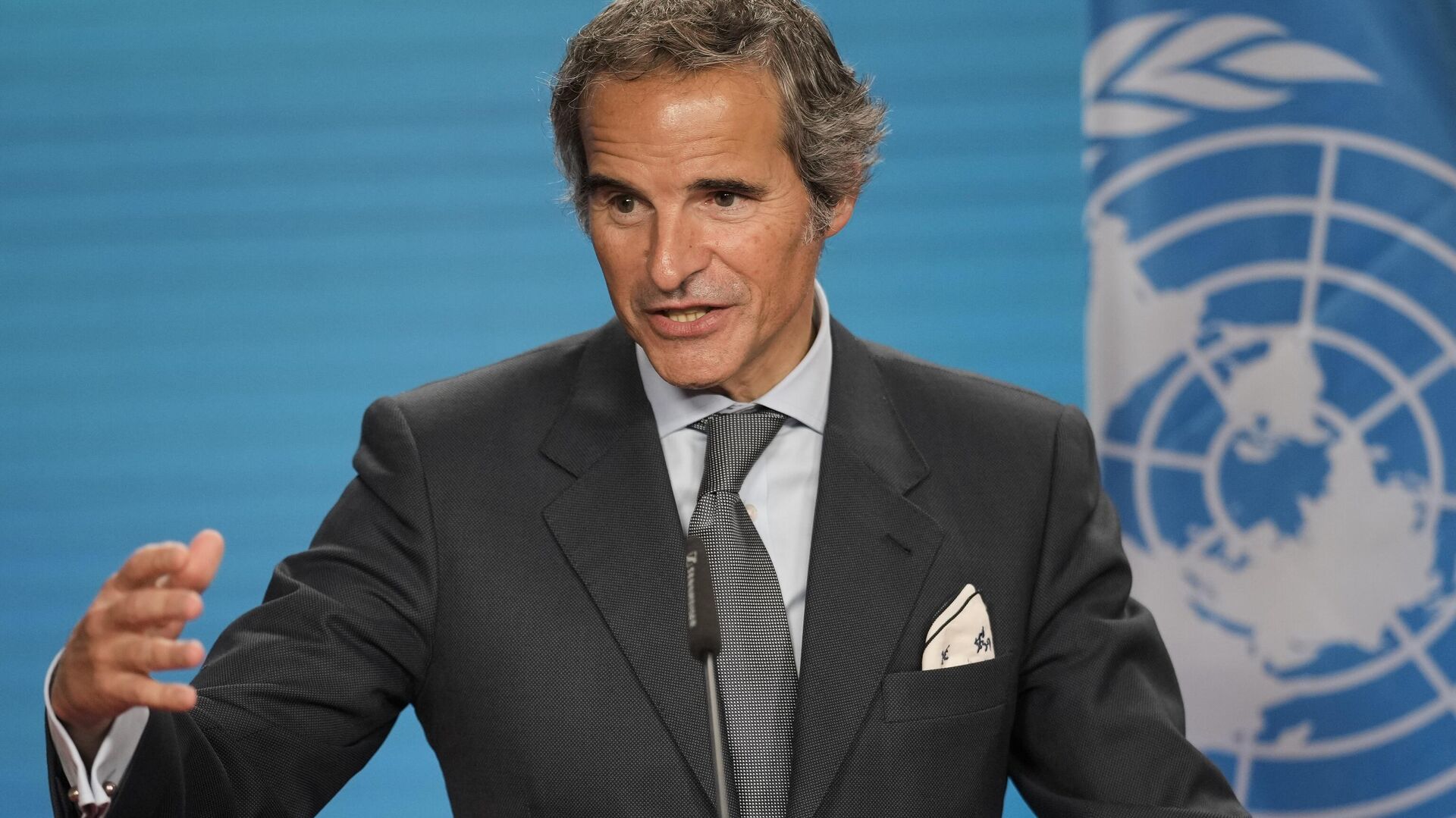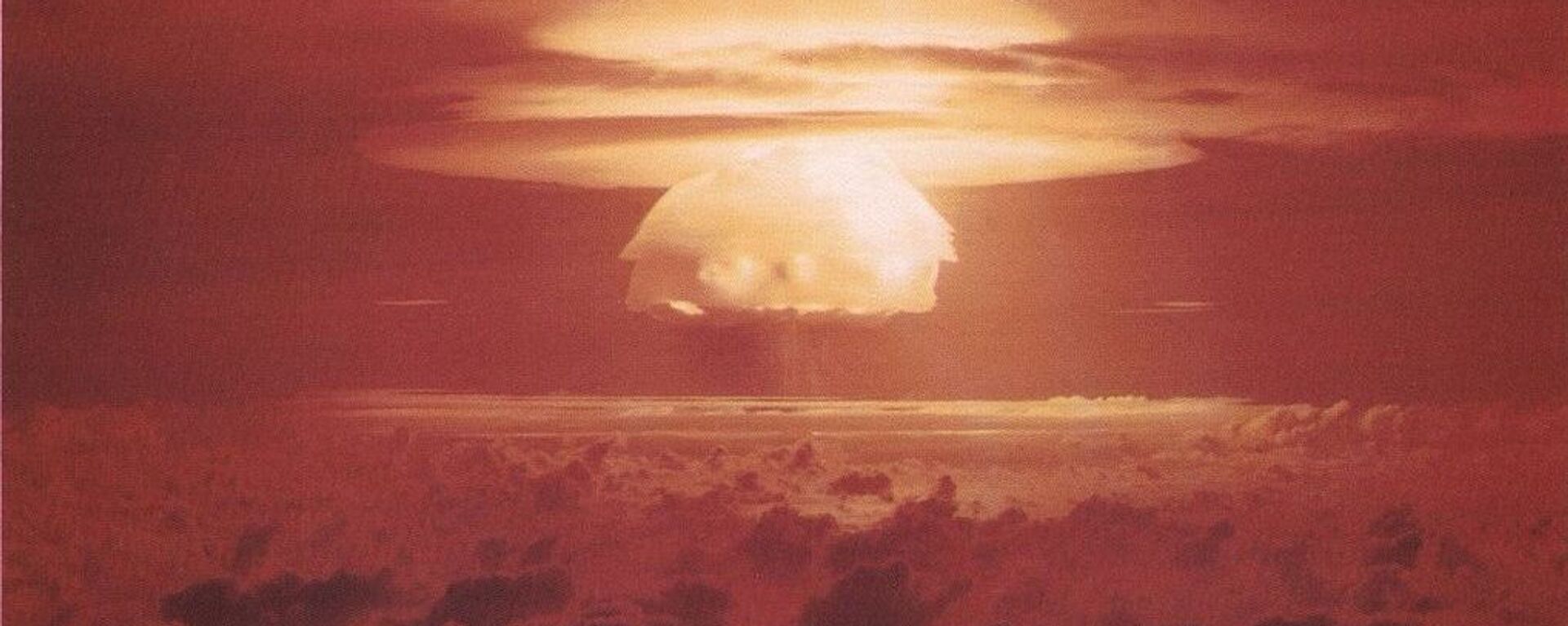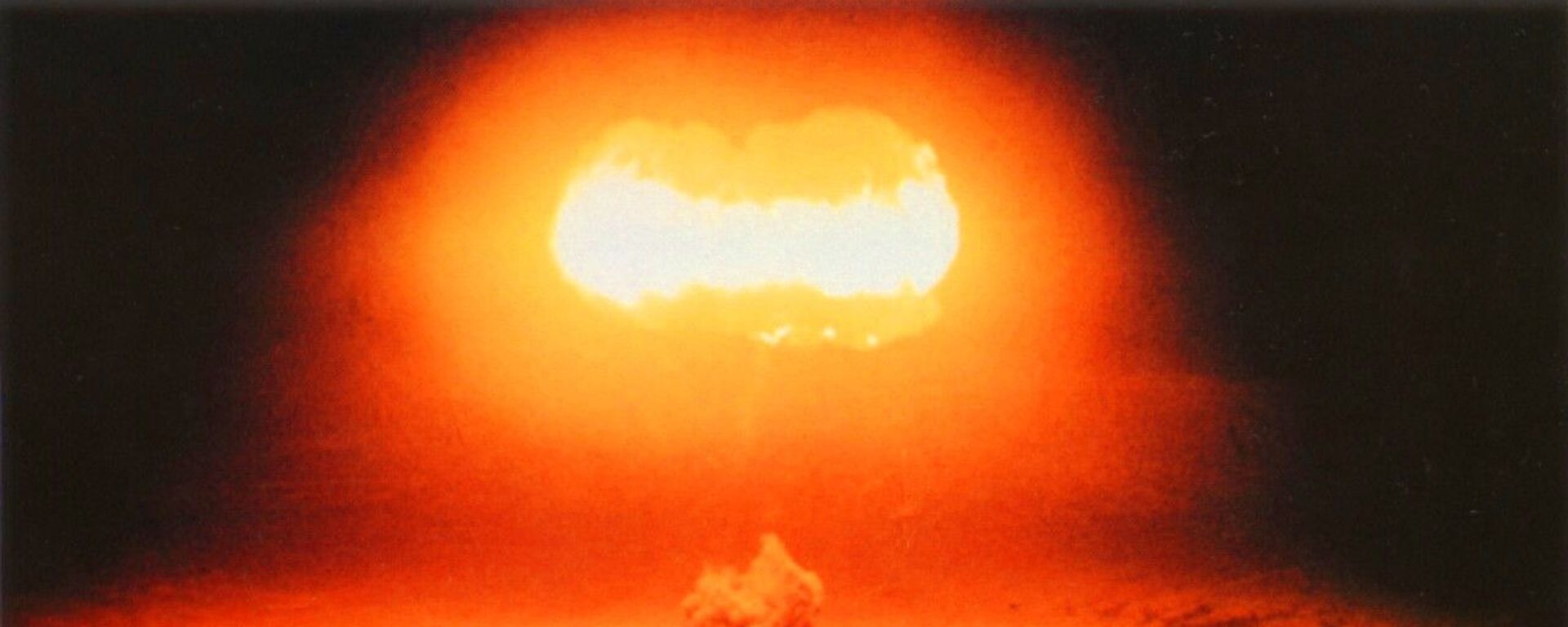Nuclear Power ‘Lapdog’ IAEA to Suffer ‘Reputational Blow’ for Fukushima Wastewater Release
17:14 GMT 07.07.2023 (Updated: 17:00 GMT 31.07.2023)

© AP Photo / Markus Schreiber
Subscribe
Numerous regional governments have for years protested Japan’s plans to release the wastewater from Fukushima Daiichi into the Pacific Ocean, including South Korea, China, and numerous Pacific Island nations, whose fishing fleets work the vast ocean waters.
The Japanese government has moved to begin the gradual release of 1.3 million tons of treated wastewater from the Fukushima nuclear power plant in Okuma. The water, which is radioactive from having been used to keep molten spent nuclear fuel cool in the aftermath of the March 2011 earthquake and tsunami that devastated the Sendai plain, has been filtered through the Advanced Liquid Processing System (ALPS). The planned release will take place over 30 to 40 years.
Kevin Kamps, the radioactive waste watchdog at Beyond Nuclear, told Sputnik on Friday that the International Atomic Energy Agency (IAEA) is caught in a vise between its advocacy for nuclear power and the reality of the detrimental effects of improper storage of its waste, which is a key problem with the Japanese government’s plan since 2011 to store that waste at the site of the damaged Fukushima nuclear power plant.
“I think it's just an industry public relations campaign to kind of say, look, the ocean's a big place, i's just going to disappear into nothingness. And it's not true,” he told Radio Sputnik. “In fact, it's going to concentrate the radioactivity in the food chain. And that's going to be the main pathway for human exposure as people eating Fukushima contaminated fish from the Pacific Ocean.”
“There's so many options that are better than dumping it in the ocean. One option is what they've been doing for the past 12 years, since this catastrophe began: storing it in tanks. It has not gone perfectly, but their rationale for not continuing with the tank storage is that they've run out of room, they've run out of physical space. And all I can say is, would you please give me a break? They have turned that region into a radioactive sacrifice zone because of the catastrophe,” Kamps said, adding that the area has already been rendered inhospitable by the radiation.
“There’s an option to expand the site perimeter, continue with the tank storage. A problem with that, though, is that site, as shown by the March 11, 2011 earthquake and tsunami, it's not a stable site, so storage there may not be the best idea,” he noted.
“A colleague of mine, Dr. Arjan Nakatani, is actually serving on the Pacific Islands Forum, reviewing this insane scheme on behalf of Pacific Island nations and opposing it. He has pointed out from the earliest days of the catastrophe that the radioactive wastewater could be transported to a more stable site and stored there. The reason this makes sense is tritium has a 12.3-year half life. Multiply by ten to get the hazardous persistence. That's 123 years. One hundred twenty-three years of storage is doable, humans can do that. That's really the best plan for what they have now.”
Kamps noted that several months after the 2011 disaster, radioactive cesium in the seawater along the California coast had doubled, proving that while “it’s a big ocean,” the radioactive materials won’t just disappear. In the case of Fukushima, it’s not just radioactive waste entering the water, either: the water itself is radioactive.
“The main culprit that we need to worry about is radioactive tritium, which is radioactive hydrogen, which means that the water molecules in that radioactive wastewater are themselves radioactive. It's not a contaminant per se. It's radioactive water. And other contaminants in there include strontium-90, cesium-137, iodine-129 - the list goes on. They have run it through filters.”
“The radioactive isotopes per element behave chemically just like their non-radioactive sibling. So, for example: cesium, that's going to go to muscle tissue; strontium, that's going to go to bone; tritium is going to go anywhere in the human body and other living things that hydrogen goes, which is everywhere. Radioactive carbon-14, the nuclear industry likes to say that they're carbon-free. Well, they're not carbon-14 free. And ironically enough, carbon-14 - which again, can go anywhere in the human body that carbon can go, which is everywhere - is perhaps the most biologically harmful of these radioactive poisons because it has a 5,500-year half-life. That means 55,000 years of hazard.”
“And all of these radioactive elements are going to enter the food chain and in fact, they're going to concentrate upwards to humans at the top of that pyramid, through fish, through seaweed. You mentioned that there has been panic buying of salt in South Korea to try to get salt not exposed to this ocean release before they start releasing. So the shelves in South Korea are devoid of salt because people are buying as much as they can before this bad idea began.”
Kamps noted other examples include the US’ underground storage sites for radioactive waste such as the Waste Isolation Pilot Plant (WIPP), buried deep under the New Mexico desert inside a watertight salt formation, where it is expected to safely decay for 10,000 years. However, even then, it took only 15 years for an accidental release of radioactive material, which escaped through a ventilation shaft.

In this Oct. 12, 2017, photo, ever-growing amount of contaminated, treated but still slightly radioactive, water at the wrecked Fukushima Dai-ichi nuclear plant is stored in about 900 huge tanks, including those seen in this photo taken during a plant tour at Fukushima Daiichi Nuclear Power Plant in Okuma, Fukushima Prefecture, northeast of Tokyo
© AP Photo / Pablo M. Diez/Pool
Kamps said the IAEA’s endorsement of the release would deliver the agency “a huge reputational blow,” adding that it has long downplayed the risks of nuclear power and the outcomes of disasters such as that at Chernobyl in Soviet Ukraine in 1986.
“The International Atomic Energy Agency under the Nonproliferation Treaty of 1970 is a pro-nuclear power institution. Their job is to supposedly hold nuclear weapons proliferation in check while advocating an expansion of nuclear power. It's a schizophrenic mandate. And what they do is they will downplay Chernobyl, they will downplay Fukushima as part of their pro-nuclear power mandate.”
Kamps also noted that the Japanese government has been strongly pro-nuclear power since the 1950s, thanks to pressure by the US government, which occupied the country from the end of World War II until 1952. He accused the IAEA of being “a lapdog sitting in the lap of Tokyo Electric and the Japanese government.”
“It's pretty astounding that they're willing to stick to their script when, you know, they are getting called out by a long list of countries in the Pacific who are going to be harmed by this and by scientists with a lot more integrity than any of those those institutions I mentioned, who are saying that the data is nonexistent, analyzes have not been completed. It's all very half-baked. And I guess those promoting it are hoping that this public relations scheme to just make people look away and forget about it is going to work. So I guess that fight is on.”
“There's a growing list of countries that have banned importation of seafood from the Fukushima region, which include places like South Korea and China and elsewhere. And the list of countries that have spoken out very strongly against this wastewater dum, those same countries and many others, including Russia, the Philippines, the Pacific Islands Coalition, who have an expert panel looking at this, have pointed out just how sloppy the so-called analysis by Tokyo Electric and the Japanese government have been. The documentation is missing. The analyzes are far from complete. Even analyses that the IAEA promised to carry out are one-third done at this point, and yet they have signed off on the dumping to begin. So the public relations facade of proponents of dumping is very thin and they're being called out on it at the highest levels of many governments on the Pacific Ocean.”
Many of those same governments, Kamps noted, are also very heavily dependent on nuclear power and wrestle with many of the same questions of safe waste disposal. Pressure from anti-nuclear groups has also forced their hand, and the expert noted that in Japan, those groups have long been “the little Dutch boy with their finger in the dike, preventing this scheme from going forward for many years.”
“Hats-off to the Japanese anti-nuclear movement, which has kept the vast majority of reactors shut down since Fukushima. They won't let them be reactivated. And that's something that amazes me because we try so hard in the United States to do that, too. But we're often steamrolled in our efforts,” he said.



